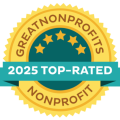Seawater Greenhouse
Seawater Greenhouse

Solution Overview & Benefits
Technology that uses seawater to grow crops in the hottest and driest places on earth, designed and developed by Charlie Paton and the researchers at Aston University.
The Seawater Greenhouse creates new sources of fresh water derived from seawater, and a climate that is suited for growing plants, both within and beyond the greenhouse structure. It enables the cultivation of crops in hot and arid regions of the world.
- A technology that reduces temperature and increases humidity.
The greenhouse process uses sunlight and seawater to enable the supply of food, energy and fresh water. Air ventilation, driven by prevailing winds is cooled, cleaned, sterilized and humidified by seawater evaporators. This creates a climate that enables crops to grow in areas which normally do not provide the right conditions due to high temperatures, a lack of fresh water or both.
Since only pure water evaporates, the seawater is reduced to concentrated brine, which is further evaporated outside the greenhouse to yield salt and other minerals. Evaporating seawater and cooling the air in the process is simpler and less expensive than other desalination methods. Output from the Seawater Greenhouse is equal to or greater than more energy-intensive methods, as the volume of water lost through plant transpiration is reduced by tenfold. Plants that are not stressed by excessive transpiration grow faster and produce higher yields.
History & Development
Due to climate change, there is rising concern regarding overpopulation and unsustainable farming practices. The possible exhaustion of fresh water and food resources is a reality.
The concept of Seawater Greenhouse was first developed in 1991 from LightWorks Ltd in the United Kingdom. Initial stages of pilot research took place in the Canary Island of Tenerife in 1992, where positive outcomes drove the team to look towards other potential arid regions.
The second Seawater Greenhouse was constructed on Al-Aryam Island in Abu Dhabi, United Arab Emirates in 2000. Later, a third research and greenhouse facility was completed in 2004 near Muscat, Oman.
These projects have received positive feedback, and have proven to increase profits in the farming of fruits, vegetable, herbs and flowers.
Availability
- Publicly available: yes
- Countries where available: Canary Islands, Qatar, United Arab Emirates, Oman, Australia
- Price range (USD): Contact supplier for quote
Specifications
Additional Information
Similar solutions...
Get in Touch!
Get in touch with us by filling out the form or emailing us at contact@techxlab.org.





